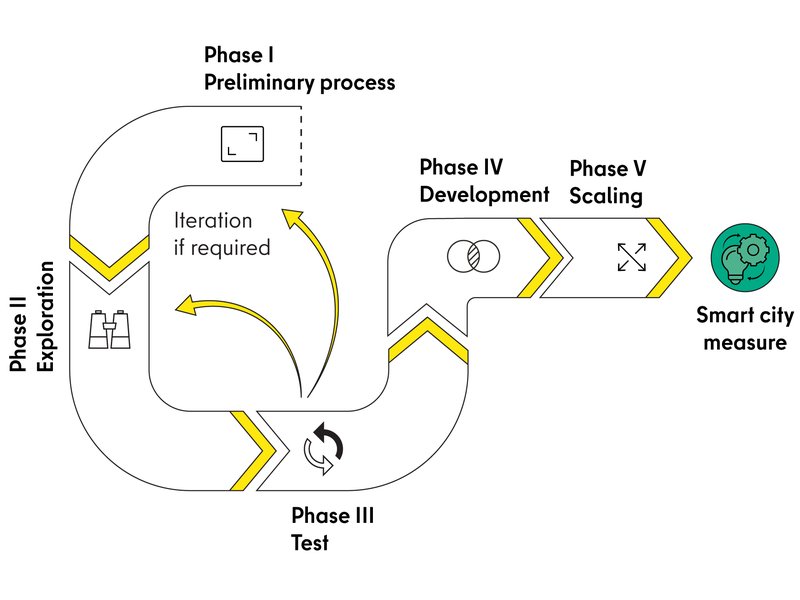The preliminary process aims to help define the scope and framework of a measure before its implementation begins. It helps clarify the underlying challenges and the objective of the measure and the roles and mandate of the actors, as well as resource planning, ICT framework conditions, and cost-effectiveness. The main objective is to arrive at a precise definition of the issues to be addressed. Initial public and expert participation [45] ensures that the measure is designed to meet needs and can be linked to other relevant measures. In addition, in order to enable sound planning of the measure, methods from project phases II – IV are applied in the preliminary process. In this way, it is possible to explore which work stages are to be carried out in which of the subsequent phases, or whether it is possible to start with later phases right away.
Outcome: At the end of the phase, an Action Team has been established with clearly defined roles, responsibilities and capacities, along with a political mandate for implementation and a standardized description of the initial project and its intended impact.


